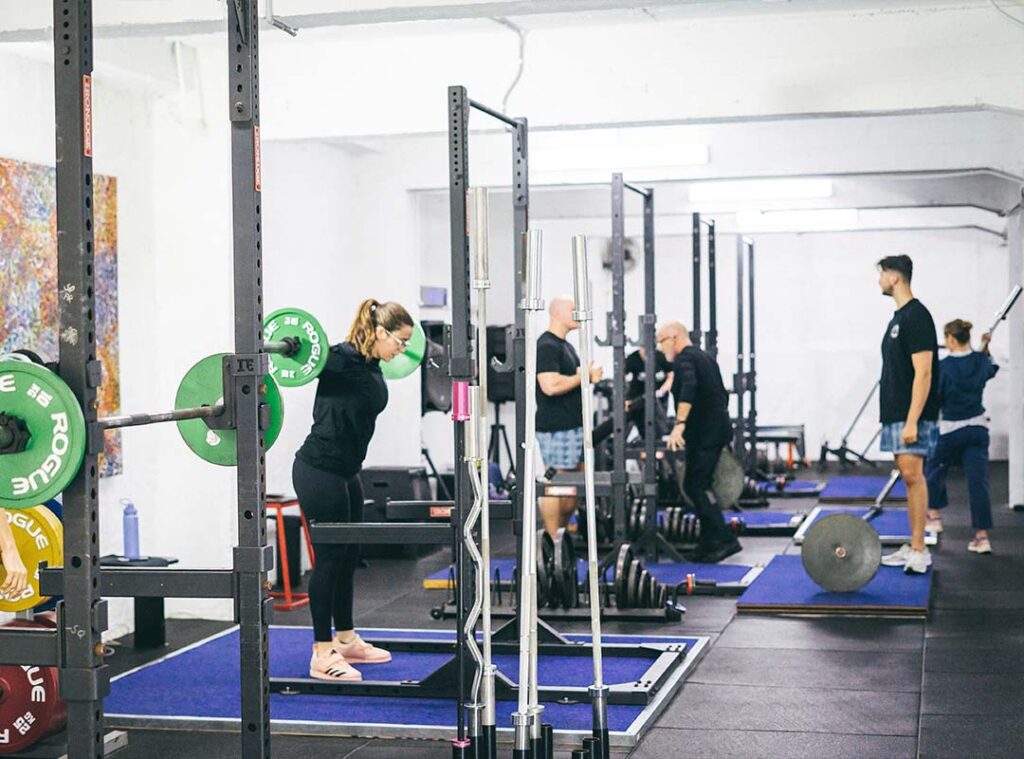Perhaps you’re already participating in Strength Training twice weekly¹. Well, what about cardiovascular exercise? To gain those heart health benefits, healthy adults should aim for at least 150 minutes of moderate or 75 minutes of vigorous cardiovascular exercise each week. These sessions can be as short as 10 minutes of either moderate or vigorous intensity exercise. Vigorous exercise is roughly twice as effective as moderate exercise in terms of time. Lastly, cardiovascular is separate from routine daily activities, like chores, that last less than 10 minutes. How do you know how hard you’re training? Well, the talk test is a practical way to gauge exercise intensity: if you can still hold a comfortable conversation, you’re at moderate intensity; if you can’t talk easily due to heavy breathing, you’re at vigorous intensity¹. Many individuals wonder how to balance cardio and weights. So today we’ll answer the question: “will cardio kill your strength gains?”
Start slow
It’s important to start slowly to allow time to adapt. We recommend you choose your cardiovascular exercise based on preferences, goals and availability. Besides the talk test, you can also calculate your maximum heart rate (HR max) to determine the appropriate intensity. Heart rate can be calculated with the formula “220 – age”. Determine your heart rate reserve (HRR) such as 40-60% HRR of HR max for moderate intensity. 70% + would constitute vigorous. Beginners might start with 15 minutes of moderate-intensity exercise three times a week. As your fitness level improves, gradually increase both the duration and frequency of your workouts. For instance, add one minute to your 20-minute jog each session to steadily progress. This gradual approach ensures that you don’t outkick your coverage. By starting slowly and increasing intensity over time, you enhance your fitness level safely and limit the fatigue overlap into your strength training.
Get creative
Pounding the pavement, although crucial for channelling your inner Rocky Balboa, isn’t the only way to get fit. You might instead enjoy swimming, cycling, rowing or even brisk walking! Perhaps you could consider joining a sport. Sports such as football and tennis would absolutely count for getting your activity. Another creative option can include martial arts such as Jiu Jitsu, where sparring sessions or intense drills involve intense cardiovascular demands. Many drills can be practised solo in a small space, allowing for handy options when travelling or during poor weather. Thankfully, strength training will help your body handle the demands of these physical activities². In fact, a meta-analysis by Lauersen found that “Strength training programmes reduced sports injuries by an average of 66% and were, with 95% certainty, able to more than halve the risk of sports injury (95% CI 52% to 76%).” Get creative and don’t stop strength training.
Some cardio caveats
Improving cardiovascular health is crucial, but it’s important to balance it with strength training. The timing of your sessions plays a significant role. Research shows that “concurrent aerobic (cardiovascular) and strength training does not compromise muscle hypertrophy and maximal strength development.” ³ However, explosive strength gains might be affected if cardiovascular training occurs in the same session. Another study found that “lower body strength was impaired when training is performed within the same session than in different sessions.” Therefore, it is recommended that “trained individuals should consider separating endurance from resistance training during periods where the development of dynamic maximal strength is prioritised.” ⁴ Besides managing session timing, consider the relative importance of each goal. When maximizing strength, you may need to adjust the intensity, frequency and mode of your cardiovascular training⁵. By balancing these factors, you can pursue both cardiovascular health and strength gains.
Play the long game
It’s essential to balance cardiovascular exercise with strength training for overall fitness. Aim for at least 150 minutes of moderate or 75 minutes of vigorous cardiovascular activity weekly, adjusting intensity based on the talk test or heart rate. Start gradually to adapt and minimize overlap with strength training. Explore various cardio options like swimming, cycling, or sports to keep workouts enjoyable and effective. Be mindful of session timing; research suggests that separating cardio from strength workouts can optimize results. Adjust cardiovascular training based on your strength goals, ensuring neither aspect compromises the other. By integrating these strategies, you can enhance both cardiovascular health and strength gains, creating a well-rounded fitness routine. If you’re unsure where to start, contact us today at Sydney Strength Training.
References:
- Cardiovascular-Exercise-Prescription-for-Healthy-Adults-v2.pdf (ausactive.org.au)
- Strength training as superior, dose-dependent and safe prevention of acute and overuse sports injuries: a systematic review, qualitative analysis and meta-analysis | British Journal of Sports Medicine (bmj.com)
- Compatibility of Concurrent Aerobic and Strength Training for Skeletal Muscle Size and Function: An Updated Systematic Review and Meta-Analysis – PubMed (nih.gov)
- Development of Maximal Dynamic Strength During Concurrent Resistance and Endurance Training in Untrained, Moderately Trained, and Trained Individuals: A Systematic Review and Meta-analysis – PubMed (nih.gov)
- Concurrent training: a meta-analysis examining interference of aerobic and resistance exercises – PubMed (nih.gov)
